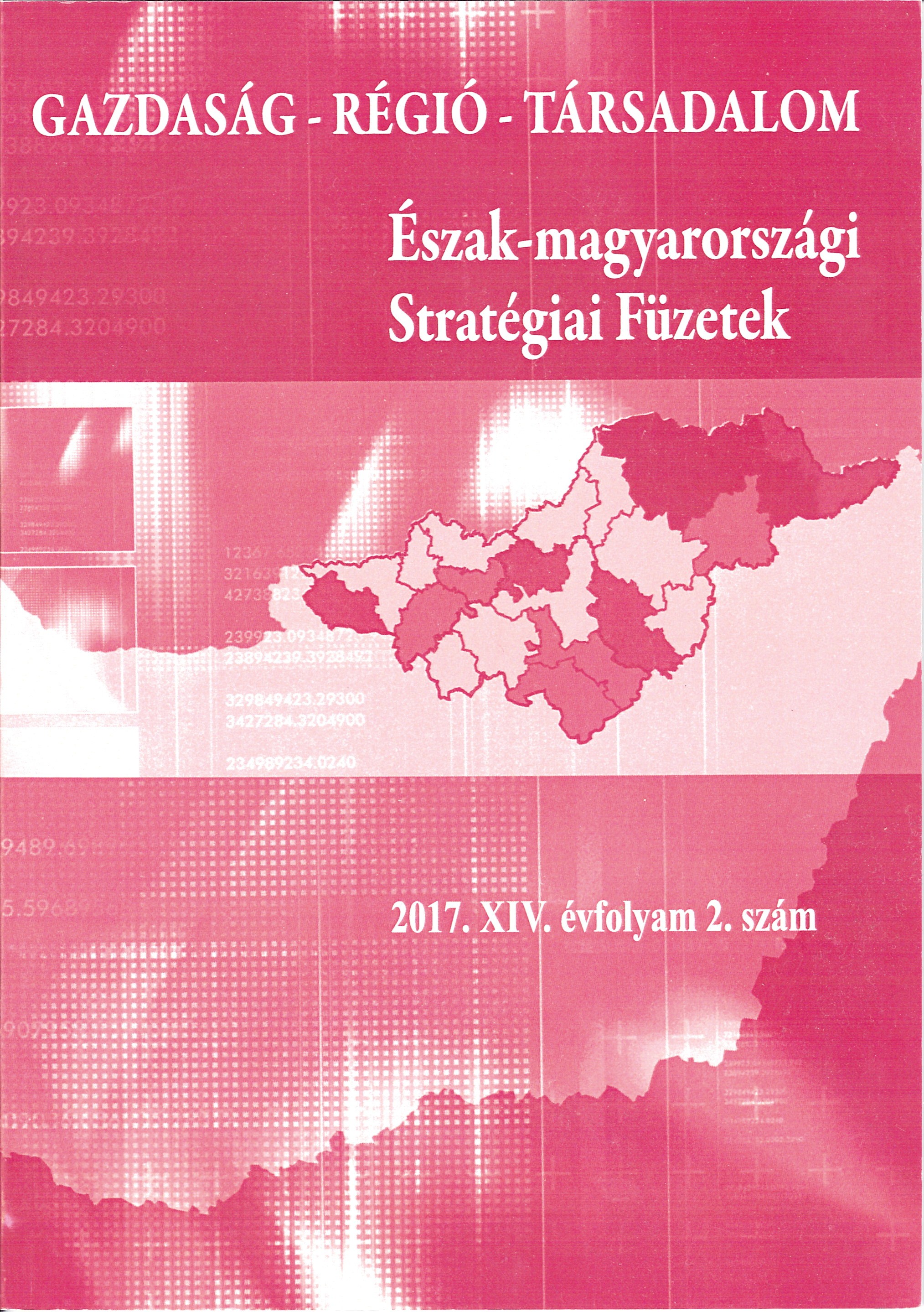Whether the new neoclassical synthesis is crisis-proof?
Keywords:
economic theory, new neoclassical synthesis, crisis, inflation targetingAbstract
The crisis emerging from 2008 has a long lasting financial and social effect on economics which is considerable also nowadays. The ruling approaches are becoming questionable, and several new approaches are coming into view, which were initially in a peripheral situation, but they stood up for the hard times.
The macroeconomics is also not an exception from it: the new neoclassical synthesis was forming from the last decades of the XX. century, and it was translated to the practice of the developed economies. Based on the opinion of some researchers this theory could not forecast (although it was able to do it) and manage the crisis, although the science and economic policy has waited for it regarding its method and progressivity.
The economic institution system based on the synthesis, the belief in the automatism of financial markets and the voluntary optimizing have contributed to the decrease of the risk-sensitivity of economic actors. One of the most important social science exercises of the next decades can be the synthesis of the economic theory and the connected disciplines of social science like ethics, law science and psychology.
References
BODNÁR K. (2002): Phillips-görbe-modellek az újklasszikus és az újkeynesi elméletekben. Competitio, I. évf. 1. szám, (szeptember), pp. 55-72.
CHARI, V.V. – KEHOE, P. J. (2006): Modern Macroeconomics in Practice: How Theory is Shaping Policy. NBER Working Paper Series (No. 12476), National Bureau of Economic Research, 1050 Massachusetts Avenue Cambridge, MA 02138. (August).
CSABA L. (2015): Áttörés a világ közgazdaságtanában – vagy mégsem? Köz-Gazdaság, 3, pp. 1-16.
DECISION OF THE EUROPEAN CENTRAL BANK of 19 November 2014 on the implementation of the asset-backed securities purchase programme (ECB/2014/45), https://www.ecb.europa.eu/ ecb/legal/pdf/en_ecb_2014_45_f_sign.pdf
DE VROEY, M. – DUARTE, P. G. (2012): In Search of Lost Time: The Neoclassic Synthesis, The BE Journal of Macroeconomics, November.
DIMAND, R.W. (2014): James Tobin and Modern Monetary Theory, Center for the History of Political Economy at Duke University, CHOPE Working Paper No. 2014-05, February.
GERNER V. (2010): Radikális vélemény. Fordulat, 2, (9). pp. 80-85.
HO, K. (2012): A befektetési bankárok fegyelmezése, a gazdaság fegyelmezése. Fordulat, 1, (17.), 96-123.o.
JOÓB M. (2010): A gazdaság és a társadalom közötti viszony etikai alapon történő meghatározásának szükségessége. Gazdaság & Társadalom, 1, pp. 64-81.
KABOUB, F. – TODOROVA, Z. – FERNANDEZ, L. (2012): Pénzügyi instabilitás és egyenlőtlenség. Fordulat, 1, (17). pp. 28-52.
KAHNEMAN, D. (2013): Gyors és lassú gondolkodás. HVG Kiadó, Budapest.
KEYNES, J. M. (1965): A foglalkoztatás, a kamat és a pénz általános elmélete. Közgazdasági és Jogi Könyvkiadó, Budapest.
KISS Á. (2010): Élet és (közgazdaság) tudomány. Fordulat, 2, (9), pp. 20-45.
KORTEN, D. C. (1996): Tőkés gazdaságok világuralma. Magyar Kapu Alapítvány EKF Hálózat, Budapest.
KRUSPER B. (2010): Gondolatok az elefántcsonttoronyból. Fordulat, 2, (9), pp. 6-17.
LUCAS, R. E., JR. (1976): Econometric Policy Evaluation: A Critique. Journal of Monetary Economics, Supplementary Series, 1:2. pp. 19-46.
LUCAS, R. E. JR. – RAPPING, L.A. (1969): Real Wages, Employment, and Inflation. The Journal of Political Economy, Vol. 77, pp. 721-754.
LUCAS, R. E., JR. (1972): Expectations and the Neutrality of Money. Journal of Economic Theory, Vol. 4, pp. 103-124.
MELLÁR T. (2010): Válaszút előtt a makroökonómia? Közgazdasági Szemle, LVII. évf.(július-augusztus). pp. 591-611.
PIKETTY, T. (2015): A tőke a 21. században, Kossuth Kiadó.
SAMUELSON, P. A. – NORDHAUS, W. D. (2012): Közgazdaságtan. Akadémiai Kiadó. (a 19. angol nyelvű kiadás fordítása).
SARGENT, T.J. – WALLACE, N. (1975): „Rational” Expectations, the Optimal Monetary Instrument, and the Optimal Money Supply Rule, The Journal of Political Economy, Vol. 83, No. 2., pp. 241-254.
SHILLER, R.J. (2002): Tőzsdemámor. Alinea Kiadó.
SMITH, MURRAY E. G.(2010): A világgazdasági válság okai és következményei. Fordulat, 4, (11). pp. 83-98.
SUDGEN, R. (2010): Hihető világok: A közgazdaságtani elméleti modellek helyzetéről. Fordulat, 2, (9.), pp. 46-79.
SZŰCS F. (2005): A pénzügyi válságok elméleteinek áttekintése. Competitio, 4. évf. 2. pp. 89-105.
TOBIN, J. (1969): A General Equilibrium Approach To Monetary Theory. Journal of Money, Credit and Banking, Vol 1. No. 1, February. pp. 15-29.
TVERSKY, A. – KAHNEMAN, D. (2013): Ítéletalkotás bizonytalanság mellett – heurisztikák és torzítások. Megjelent Daniel Kahneman: Gyors és lassú gondolkodás (HVG Kiadó, Budapest) c. könyvének függelékében (pp. 531-554.) magyar fordításban.
TVERSKY, A. – KAHNEMAN, D. (2013): Választások, értékek és keretek. Megjelent Daniel Kahneman: Gyors és lassú gondolkodás (HVG Kiadó, Budapest) c. könyvének függelékében (pp. 555-578.) magyar fordításban.
WADE, R. (2008): Pénzügyi rezsimváltás. Fordulat, 2008-2009/4, 4. szám, pp. 36-53.
WOODFORD, M. (2008): Convergence in Macroeconomics – Elements of the New Synthesis. Prepared for the session „Convergence in Macroeconomics?” at the annual meeting of the American Economics Association. New Orleans, January 4, Downloaded: http://www.columbia.edu/~mw2230/Convergence_AEJ.pdf
Downloads
Published
How to Cite
Issue
Section
License

This work is licensed under a Creative Commons Attribution-NonCommercial-NoDerivatives 4.0 International License.



